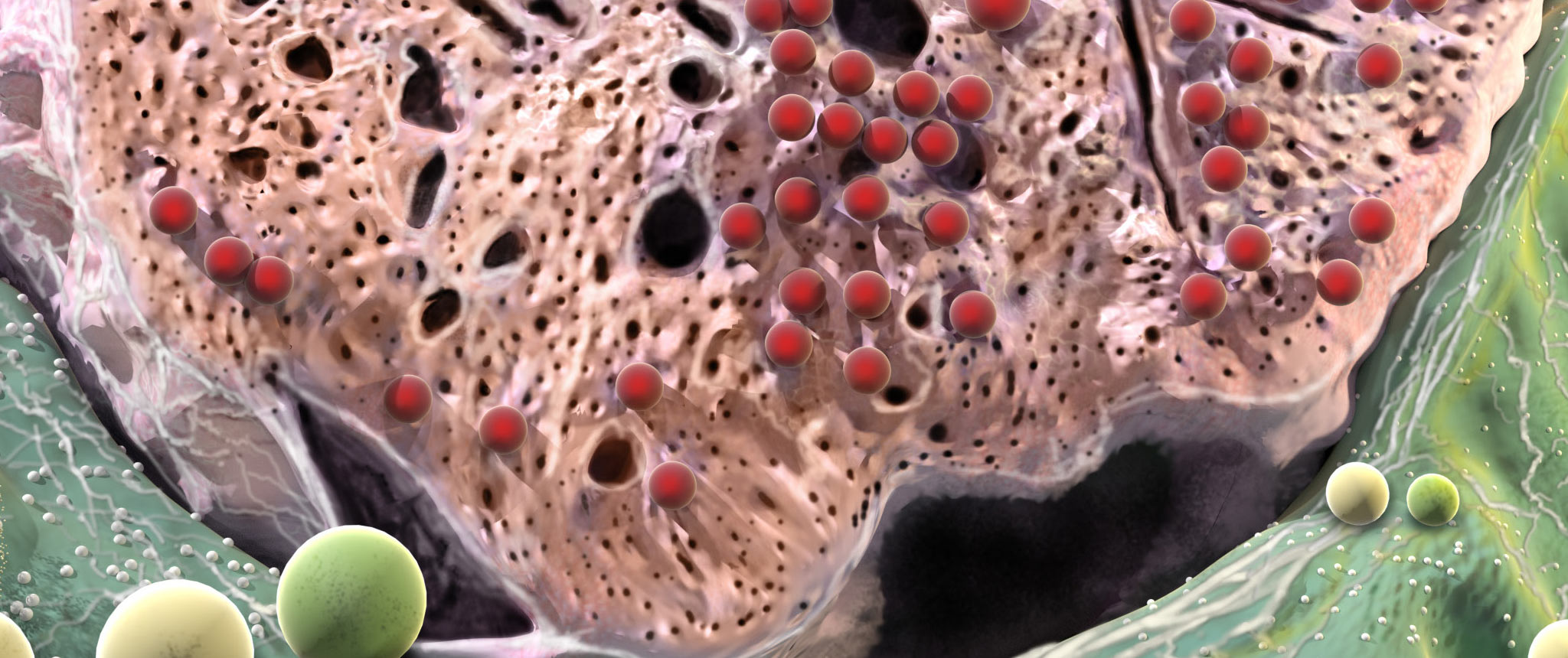
Diagnosing PEI
The diagnosis of PEI begins with an assessment of a patients clinical state and symptoms, such as abdominal pain, bowel movements and unintentional weight loss.
Director, Department of Gastroenterology, University Hospital of Santiago de Compostela, Spain
Consultant Gastroenterologist, Royal Hallamshire Hospital and University of Sheffield, UK
Several tests are available to diagnose PEI, which vary in their robustness and cost.1 Although invasive tests are the most direct and sensitive methods for assessing pancreatic exocrine function, their cost and invasive nature limit their routine use in clinical practice.1
Non-invasive tests have gained popularity in the clinical setting. Further detail of these tests is given below.
Faecal elastase screening for pancreatic function
This measures the amount of the pancreatic exocrine elastase-1 enzyme in the stool.2,3
It requires a single stool sample and is relatively simple to perform, making this test popular in clinical practice.2
Faecal elastase-1 levels are quantified with an ELISA*1
Sensitivity2
- ~100% in severe PEI
- 77-100% in moderate PEI
- 0-63% in mild PEI
Specificity2
~93% (7% of patients with diarrhoea can give false positive results)
Detection1
<200µg/g stool
= mild pancreatic enzyme insufficiency
<100µg/g stool
= severe pancreatic enzyme insufficiency
- The British Society of Gastroenterology guidelines on chronic diarrhoea recommend that all clinical centres should have access to at least one non-invasive pancreatic function test, with faecal elastase being the preferred test4
Levels of faecal elastase-1 have been shown to correlate with the flow rate of pancreatic enzymes5

- Various imaging techniques such as endoscopic ultrasound, magnetic resonance imaging or computed tomography are now available to detect early pancreatic disease6
Faecal fat test for PEI
Three-day faecal fat test is the gold standard for diagnosing and quantifying steatorrhoea (presence of excess fat in faeces), a key indicator of fat maldigestion.1
Co-efficient of fat absorption is calculated from a 72-hour faecal fat quantification1
Patients keep to a strict diet of 100g fat/day for 3-5 days
Total quantity of faeces excreted during 3 days are collected and pooled for analysis
Steatorrhoea is present if the percentage of ingested fat subsequently excreted is:
>7% in patients over 6 months of age
>15% in patients under 6 months of age
The odious nature of this test makes it very unpopular with both patients and laboratory technicians, and it does not distinguish between pancreatic and nonpancreatic causes.1
Breath test for PEI
The breath test measures the metabolism of a radiolabelled (13C) substrate by pancreatic enzymes.7
This test is easily applicable in clinical practice and is highly robust and reproducible.7
A radiolabelled substrate (13C-mixed triglyceride, MTG) is given orally with a test meal.7
- A proportion of substrates are metabolised by pancreatic enzymes
- Further metabolism of these products yields 13CO2 which is released with expired air
- The amount of 13CO2 in the expired air can be measured by mass spectrometry or infrared analysis and relates
to pancreatic function
How the breath test works

Sensitivity of the breath test for the diagnosis of fat maldigestion is higher than 90%.7
FACT
In chronic pancreatitis, sensitivity of the faecal elastase-1 test for diagnosing PEI varies from 0–63% in mild-to-moderate cases to 77–100% in moderate-to-severe cases of PEI.
Smith RC, et al. 20151
References
- Smith RC, Smith SF, Wilson J, Pearce C, Wray N, Vo R, et al. Australasian guidelines for the management of pancreatic exocrine insufficiency. Australasian Pancreatic Club, October 2015. pp 1-122.
- Sikkens EC, Cahen DL, Kuipers EJ, et al. Pancreatic enzyme replacement therapy in chronic pancreatitis. Best Pract Res Clin Gastroenterol. 2010;24:337-47.
- Leeds JS, Oppong K, Sanders DS. The role of fecal elastase-1 in detecting exocrine pancreatic disease. Nat Rev Gastroenterol Hepatol. 2011;8:405-15.
- Thomas PD, Forbes A, Green J, et al. Guidelines for the investigation of chronic diarrhoea, 2nd edition. Gut. 2003;52(Suppl 5):v1-15.
- Bian Y, Wang L, Chen C, Lu JP, Fan JB, Chen SY, et al. Quantification of pancreatic exocrine function of chronic pancreatitis with secretin-enhanced MRCP. World J Gastroenterol. 2013;19(41):7177-82.
- Choueiri NE, Balci NC, Alkaade S, et al. Advanced imaging of chronic pancreatitis. Curr Gastroenterol Rep. 2010;12:114-20.
- Domínguez-Muñoz JE. Pancreatic exocrine insufficiency: diagnosis and treatment. J Gastroenterol Hepatol. 2011;26(Suppl 2):12- 16.


